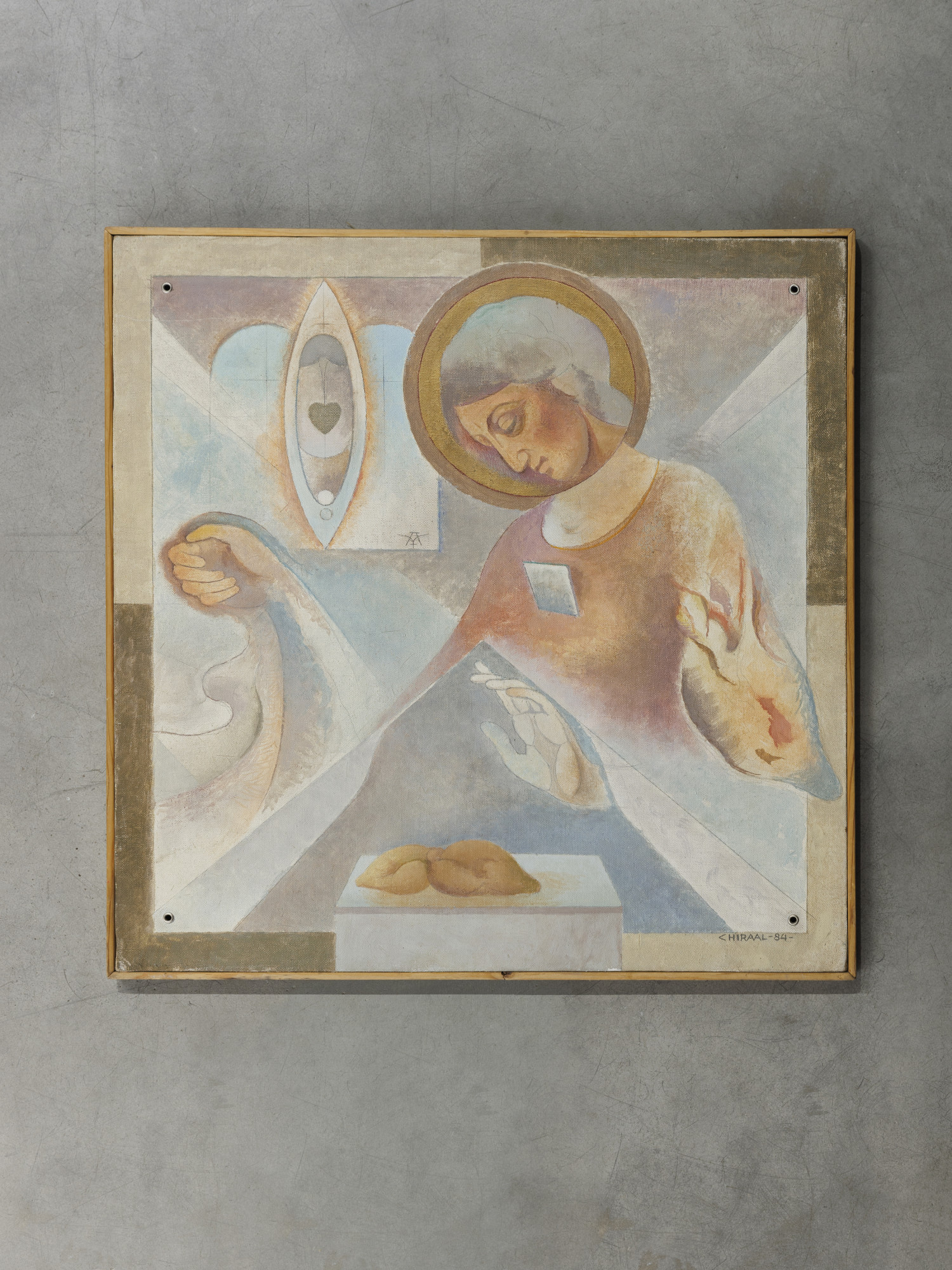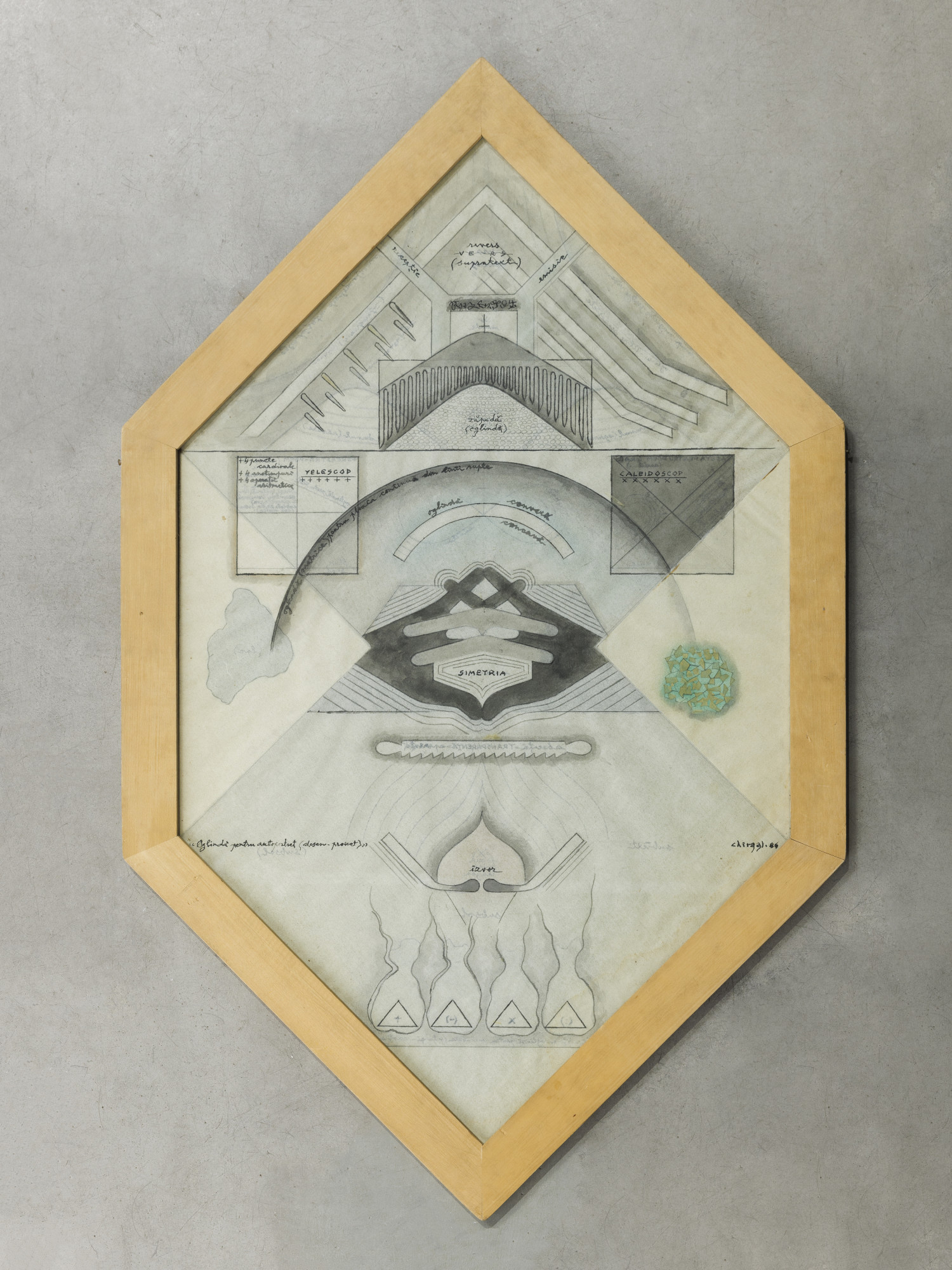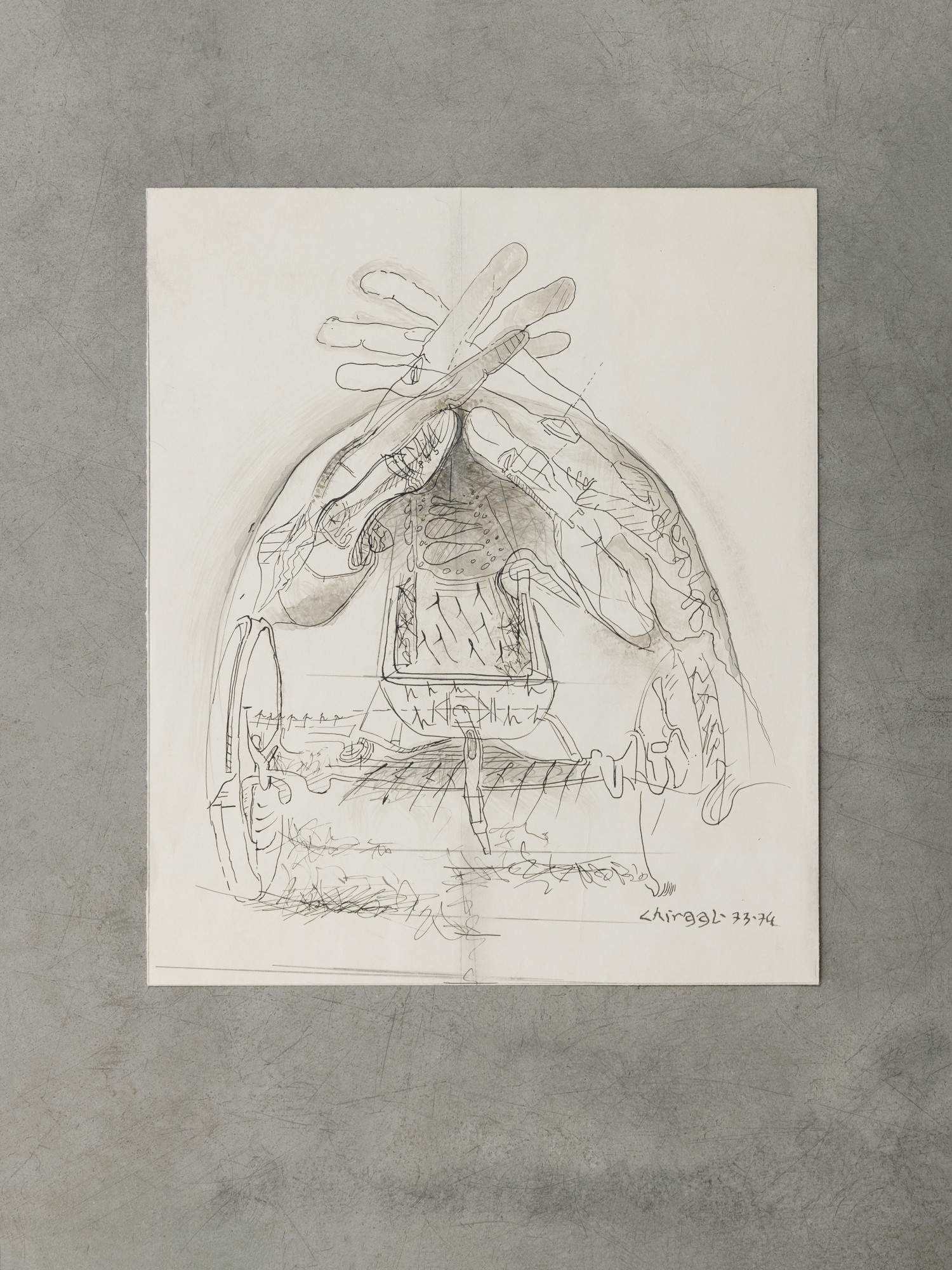The Intermission
Athens
Alexandru Chira
Gestural Temples
Feb 13, 2024
Apr 13, 2024
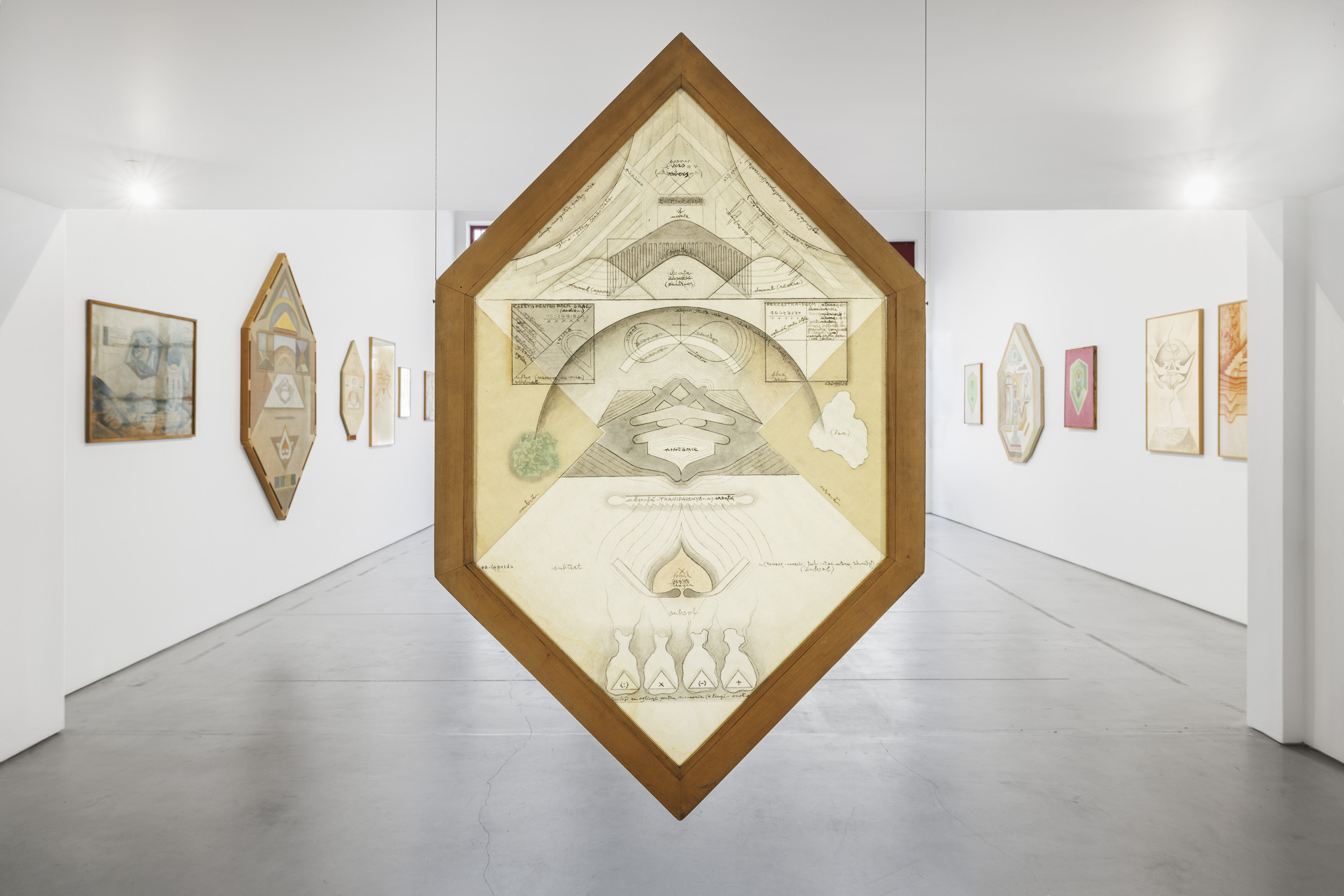
Alexandru Chira: Primary Hand Gestures
“Here lies the centre of the world, for a day or two from now on.” (Alexandru Chira)
Alexandru Chira (1947-2011) grew up as an artist during the late 1960s in the repressive, communist Romania. Atheism was a given: party sessions, congresses, and workers’ festivals replaced religious rituals. Progress, science, and technology were values imposed upon art and venerated by the public, as innovation and rationality defined the advanced visual culture of the time. Whether neo-constructivists or photo-realists, Romania’s celebrated artists focused on positive, objective renderings of material reality. Allegories, symbols, rituals, myths, mysteries, the subconscious, the erotic: all of these dark or foggy experiences and subjects seemed untouchable.
Alexandru Chira proved one of the very few Romanian artists willing to take these themes on. Critically hijacking the scientific fixation of his milieu, he imbued the abstract, geometric rationality of perfect shapes and structures with an obscure allegorical and archaic dimension. The result is striking even today: a complex, technological universe of hermetic symbols and idiosyncratic rituals that both fascinate and illuminate a longing produced by the artist’s environment, and manifested in wide-ranging social aspiration. Chira’s lifelong work verges on a holistic take on skies and earth, on climate and faith, on agriculture and genitalia, on spiritualism and aberration. His proliferating system of iconic abstractions amounts to a kind of visual poetry, and proves to be a spectacular case of faith colliding with reason.
Chira dedicated himself early on to the melding of the scientific and the speculative through his research on the archetypal reform of surrounding reality. Symbolic thinking ensued rapidly from these sophisticated proceedings, which took everything visible and reframed it into bright containers of unseen, dark matters. One of such crucial forms of alternative, semiotic research on the unseen side of reality is his exploration of the secret code of hand gestures.
This is the focus of Alexandru Chira: Gestural Temples at The Intermission in Athens. The hands are the perfect instrument for holding, throwing, touching, for acting and caressing, for doing or wrongdoing, for adapting reality to our needs. Hands shape and instrumentalize inert or reckless matter into the useful things we need. Hands are the ideal tool for and the perfect expression of our utilitarian relationship with the world, but Chira’s research liberated the hands from their mere utilitarian relationship with matter. Through a lifelong obsession with the limbs, he developed an alternative, symbolic working of the hands.
From the beginning of the 1970s, Chira began engaging in close observation and studies of reposing or acting hands in his atelier. He worked from life and in a realist mode, using both models and his own hands as seen through a mirror. These early, da Vinci-like depictions of actual limbs turned around 1973 into a more symbolic signage; instead of being anatomically faithful, the hands became increasingly allegorical, as Chira worked to uncover and develop further the non-utilitarian, primary gestures of the hands. In regressus ad uterum, the interpenetrating fingers of the hands appear to build either a tent or a house, yet the title suggests a vulvar dwelling for a compulsive drive. A similar drive is also found in the engine-like, diamond-shaped hand formation of The Temple of Expectations, the first instance of a semiotic gesture found in later work: the two palms join as if in a praying gesture, but with the thumbs crooked in a double-hook position that outlines an empty square in-between them—a closed, protected place, with a seed-like form inside—while the two elongated indexes raise above it like a pointed roof. Inception, sowing, building, dwelling, and procreation coalesce into a geometric structure that is rational and technological, yet which nonetheless serves as an archetypal formulation of a search or yearning that is both personal and mythical.
The study for Madonna with Shuttle (1984) hints to the traditional, iconographic history that led the artist to his symbolic development of hand gestures. The multiplied, hovering hands of the Virgin both protect and enchant the seed-like offerings on the makeshift altarpiece in the central, lower part of the composition. Above them, the pudenda shape of the winged spindle in the uppermost left side of the work points to the polarity of the secular procreation with the spiritual one in the lower part. This same hand gesture found in the Virgin’s enchanting palm-dance would reappear in Chira’s Self-portrait of 1997.
Alexandru Chira’s hand gestures link the above and the below, the abstract and the intimate, through a unique and personal mantra able to withstand any visual or cognitive uncertainty. In order to better understand the world around us, Chira adamantly searched through his work for compact symbols capable of serving as vessels for life’s unseen forces.
— Erwin Kessler
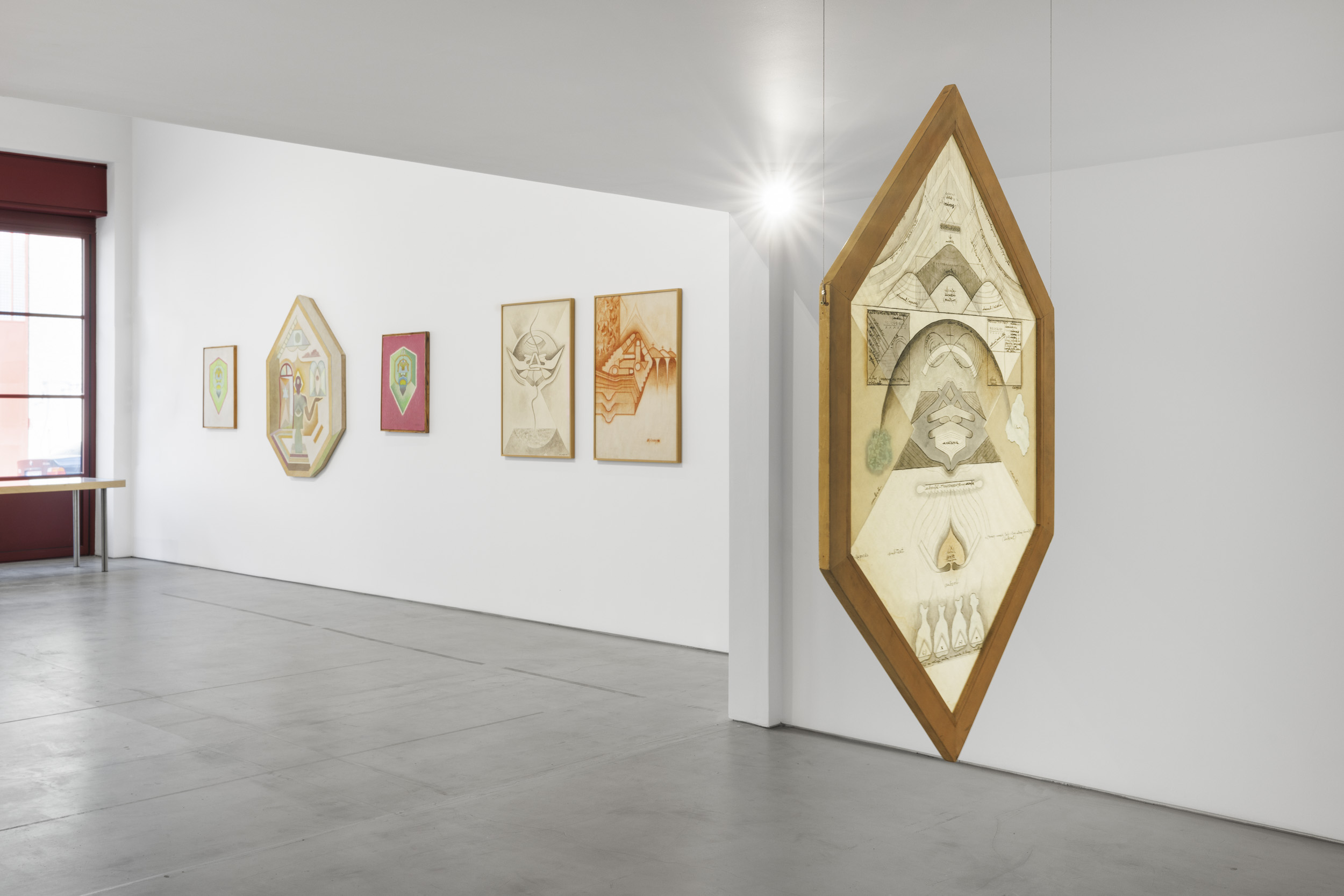
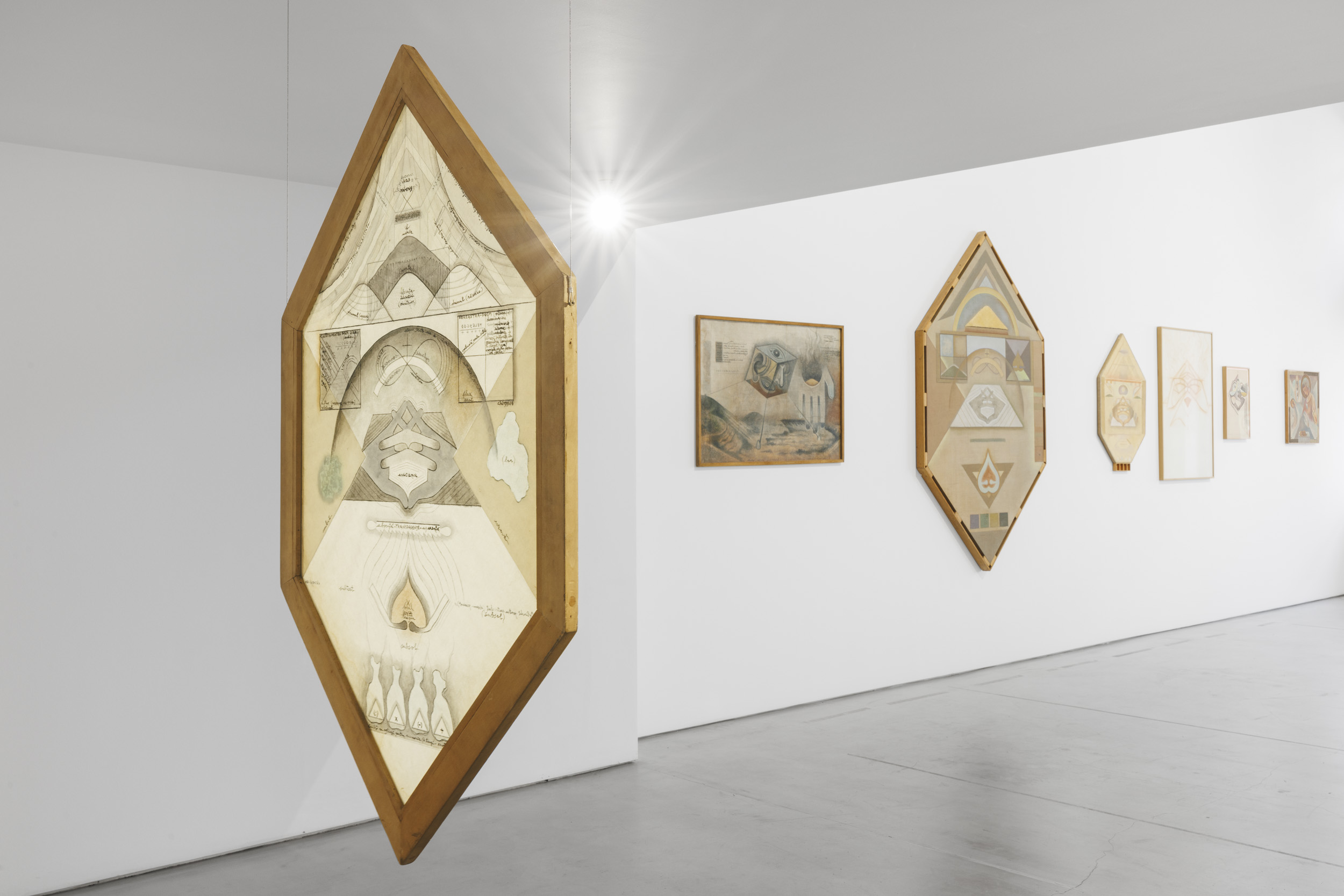
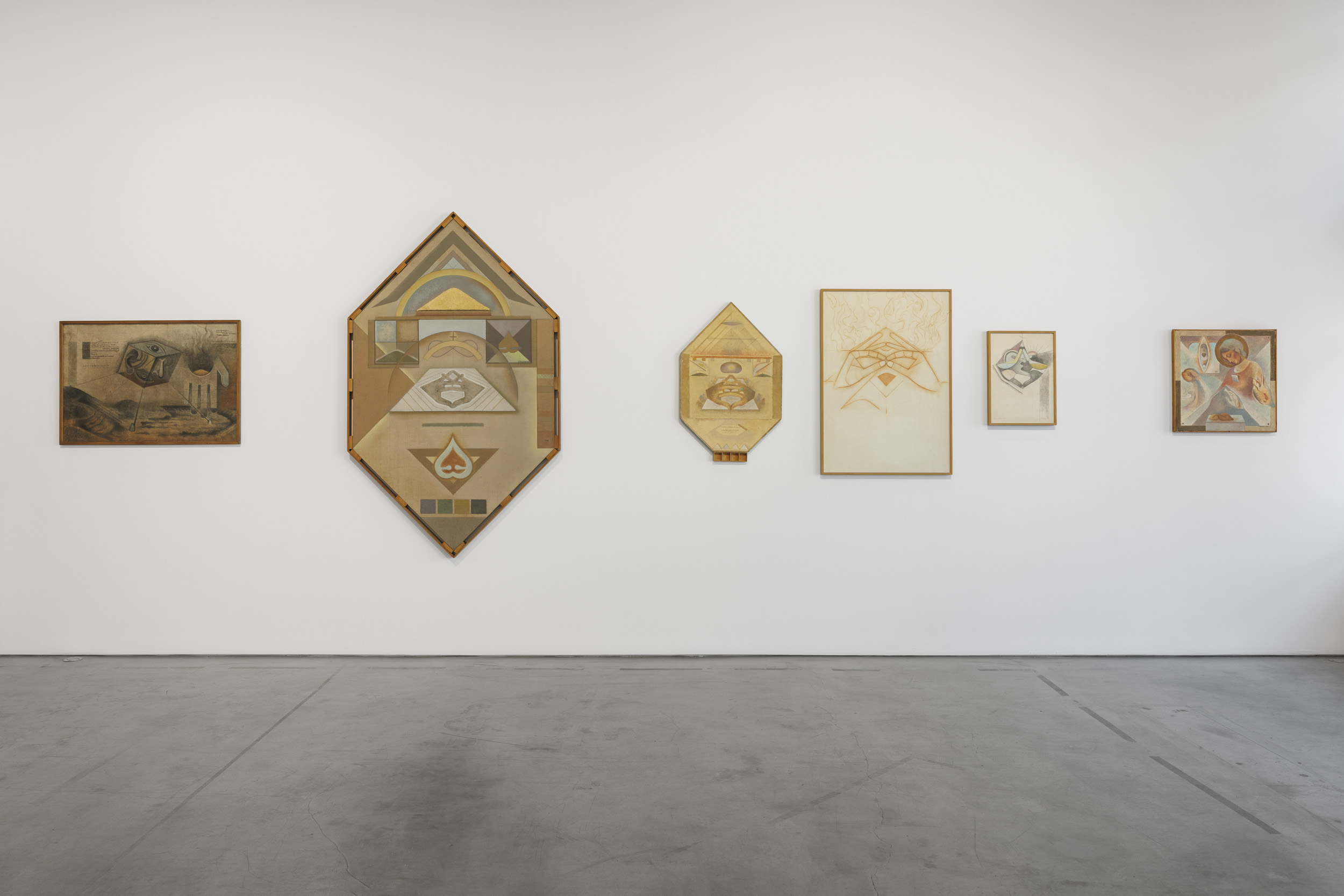
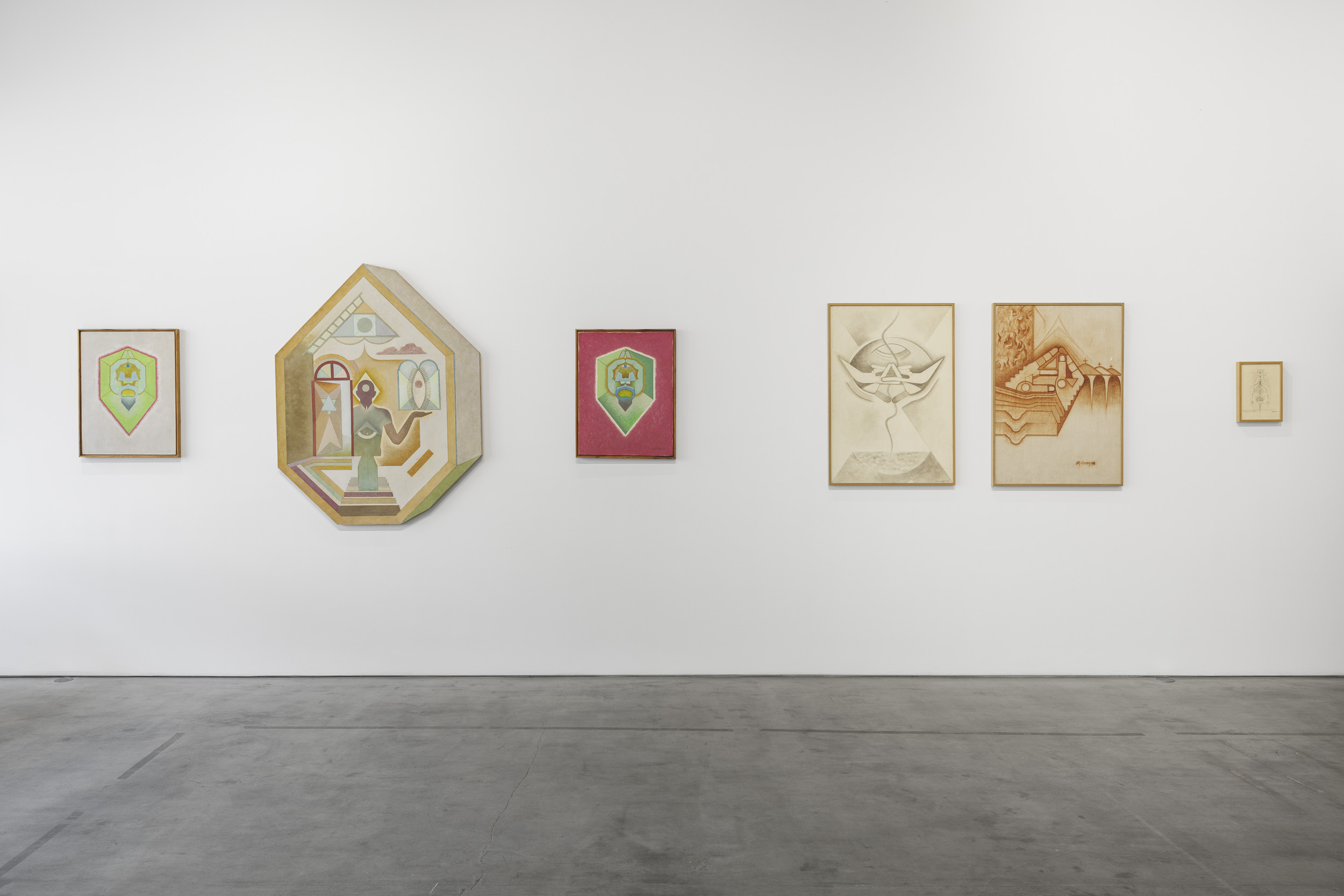

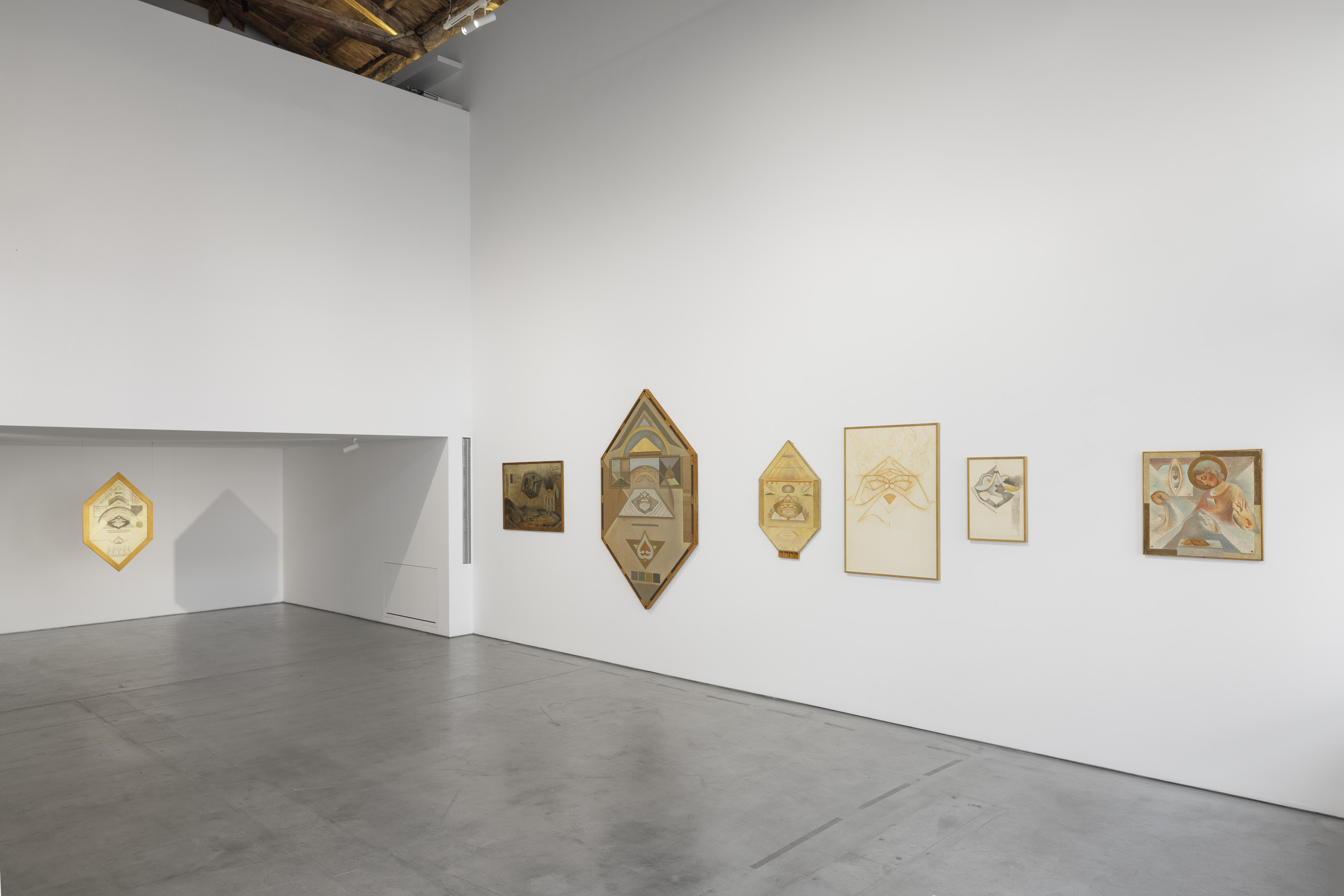
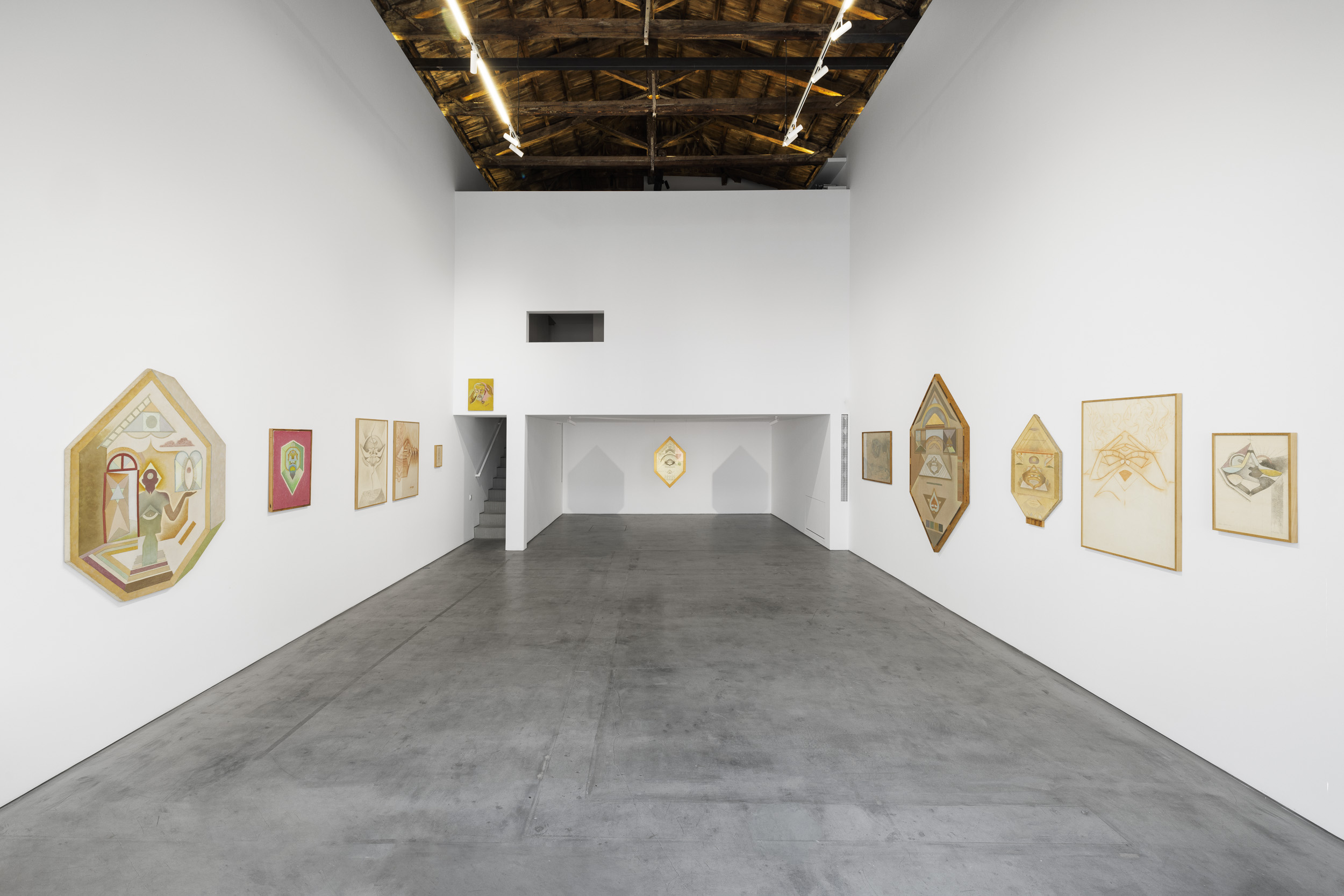
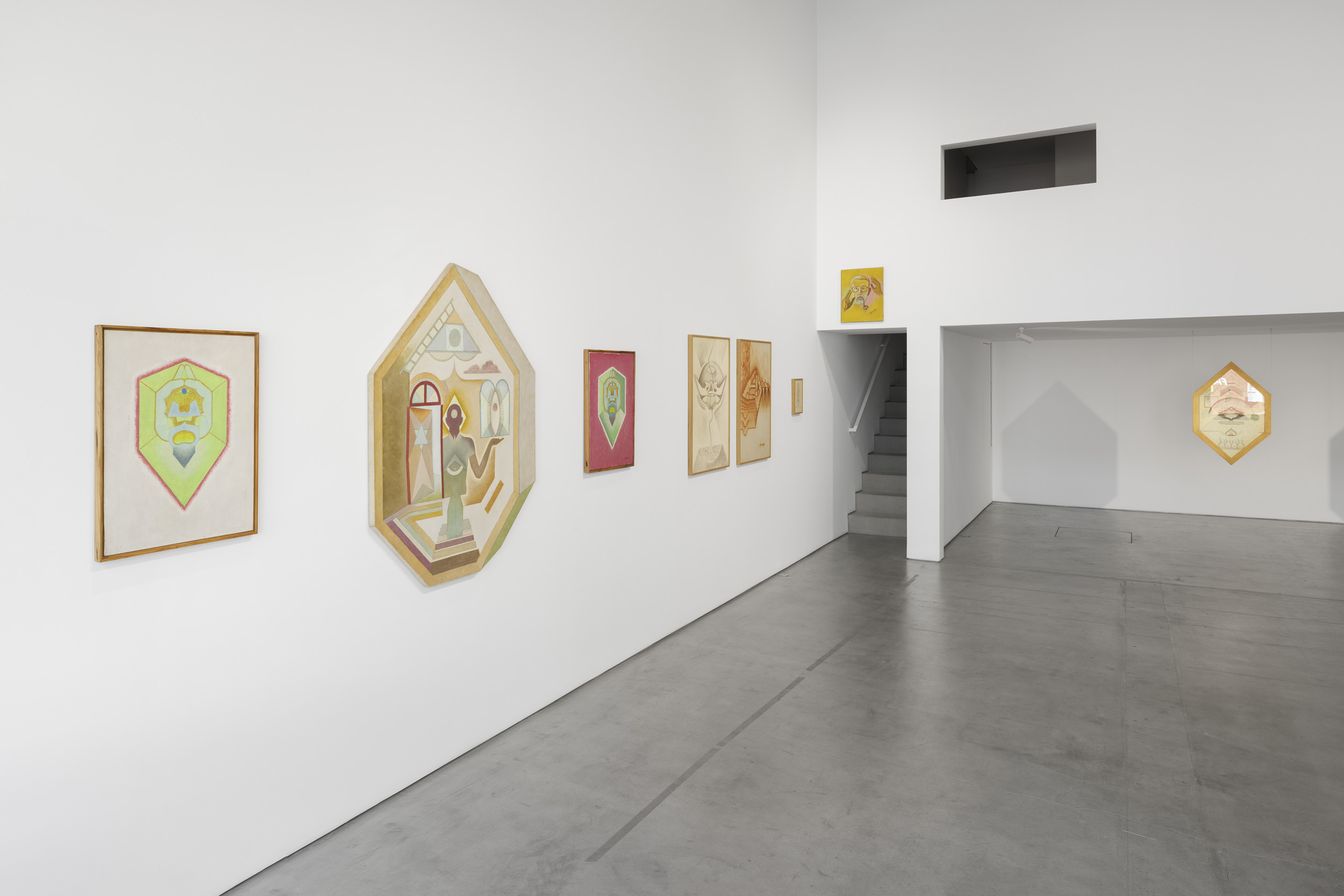
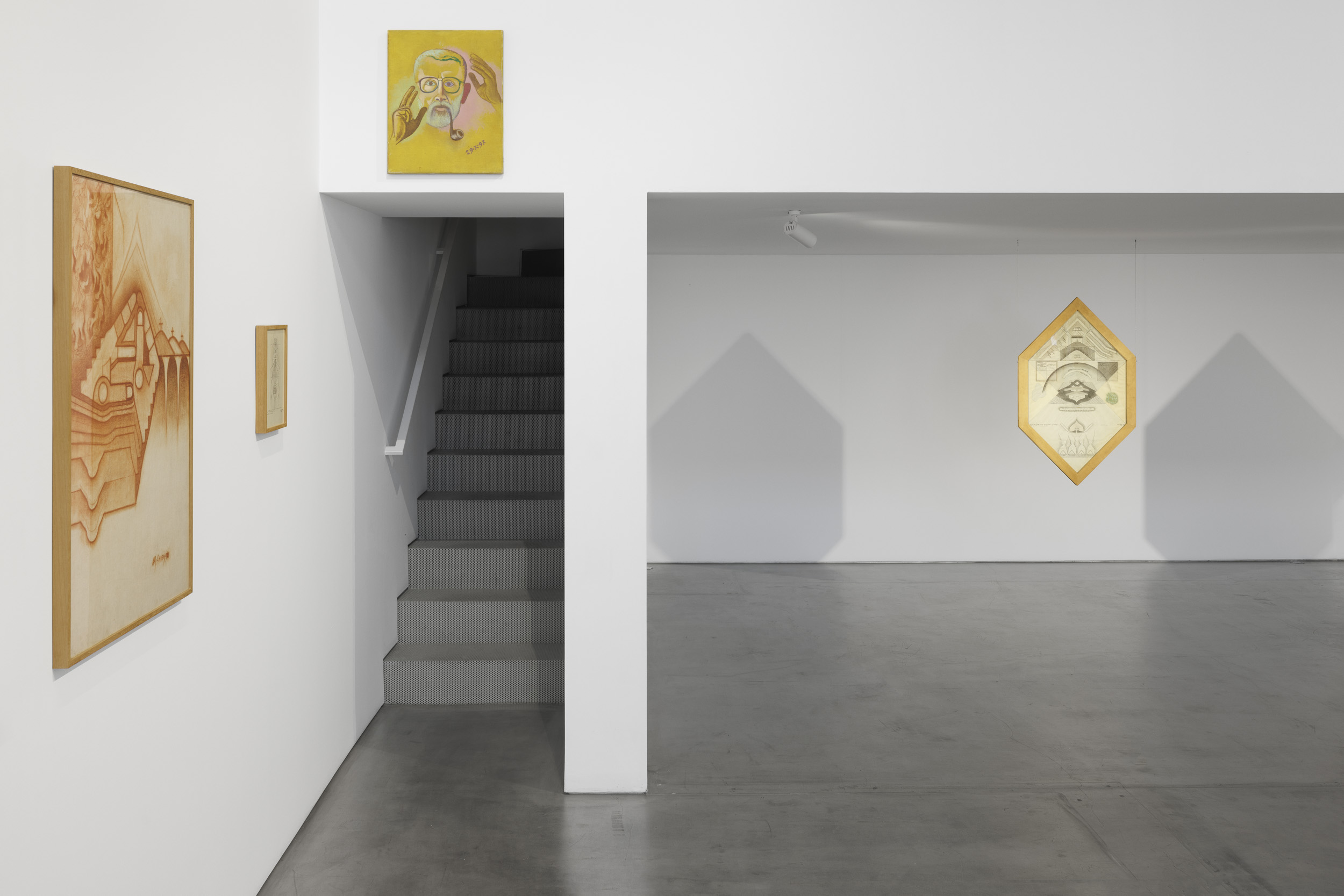


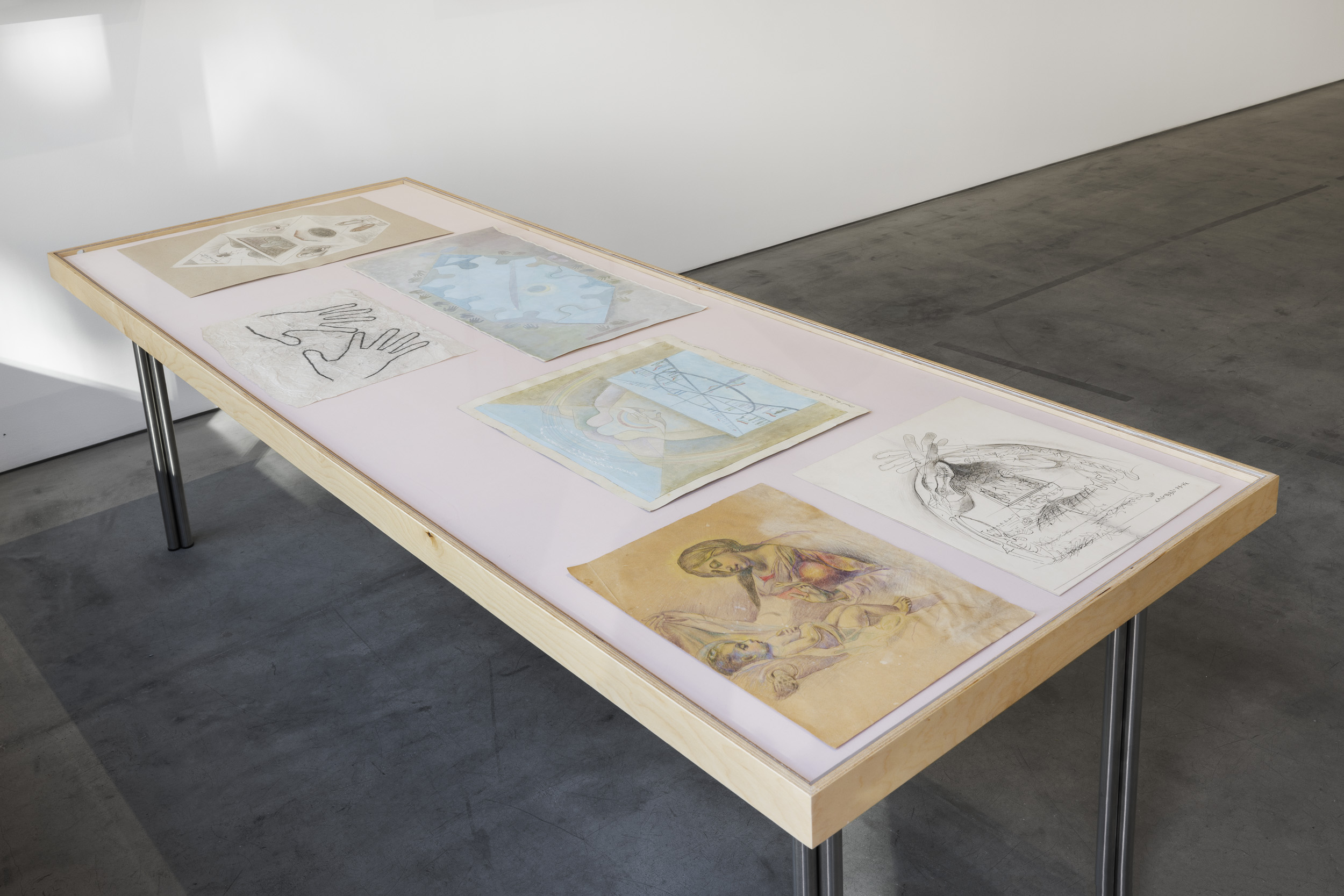
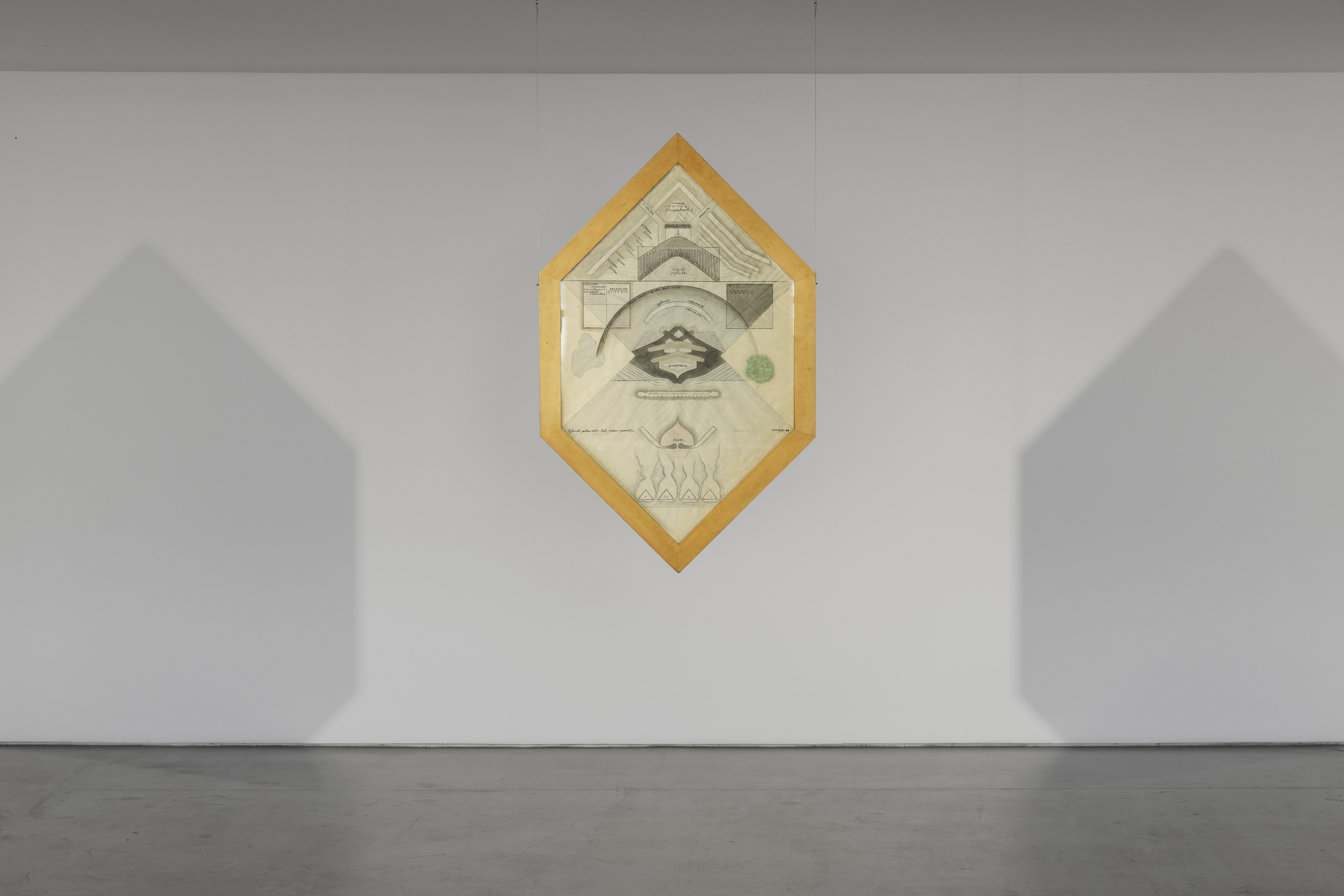
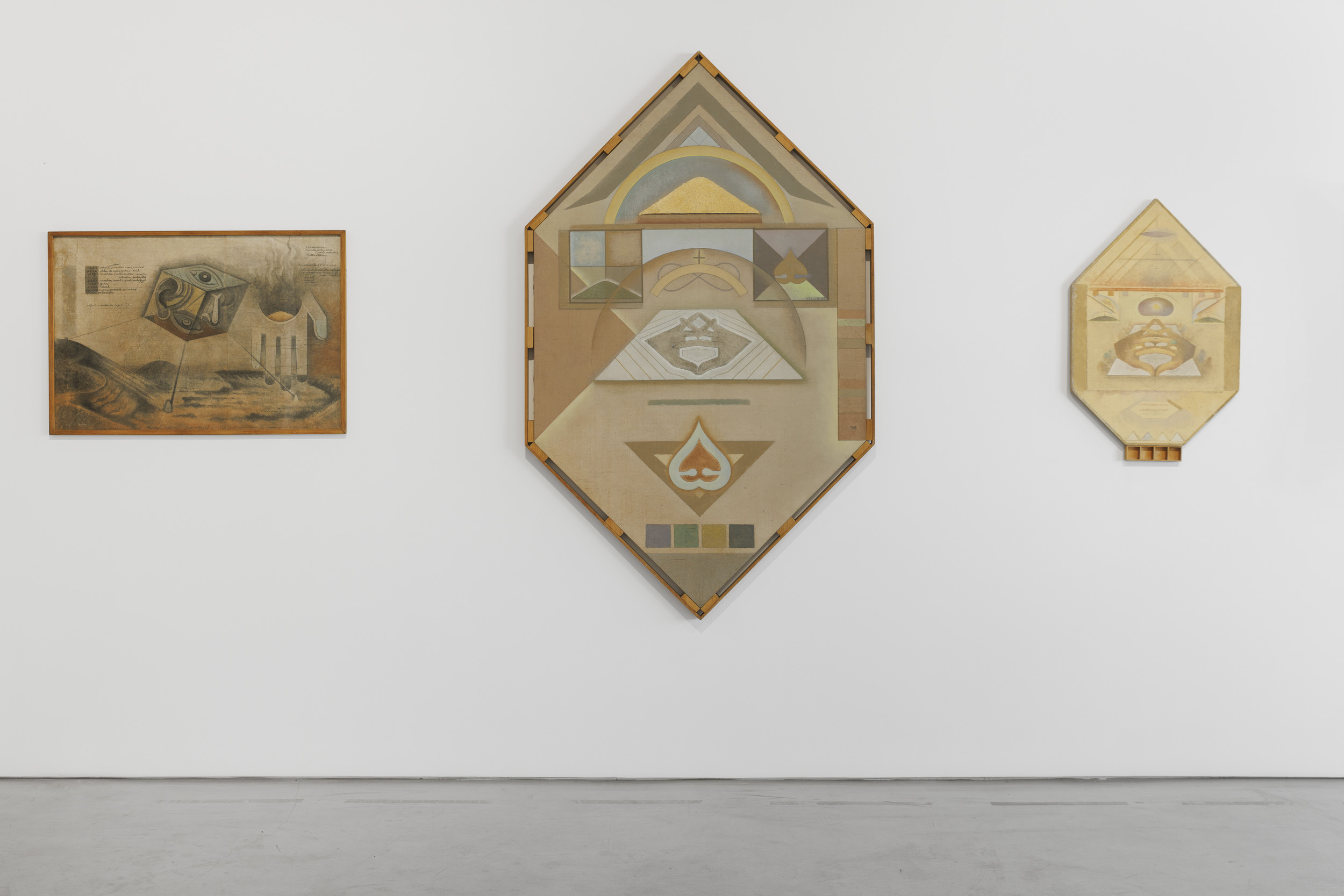
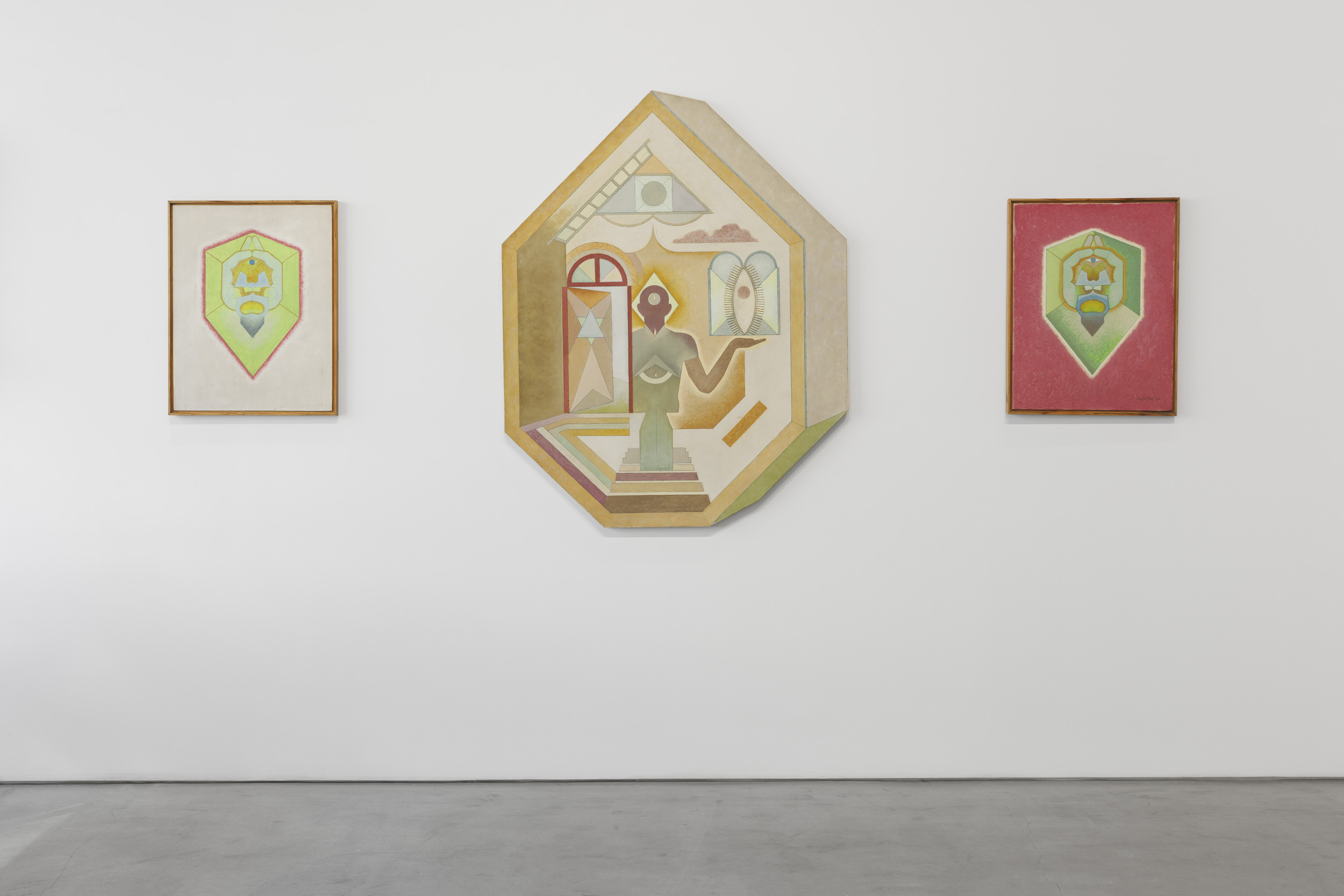
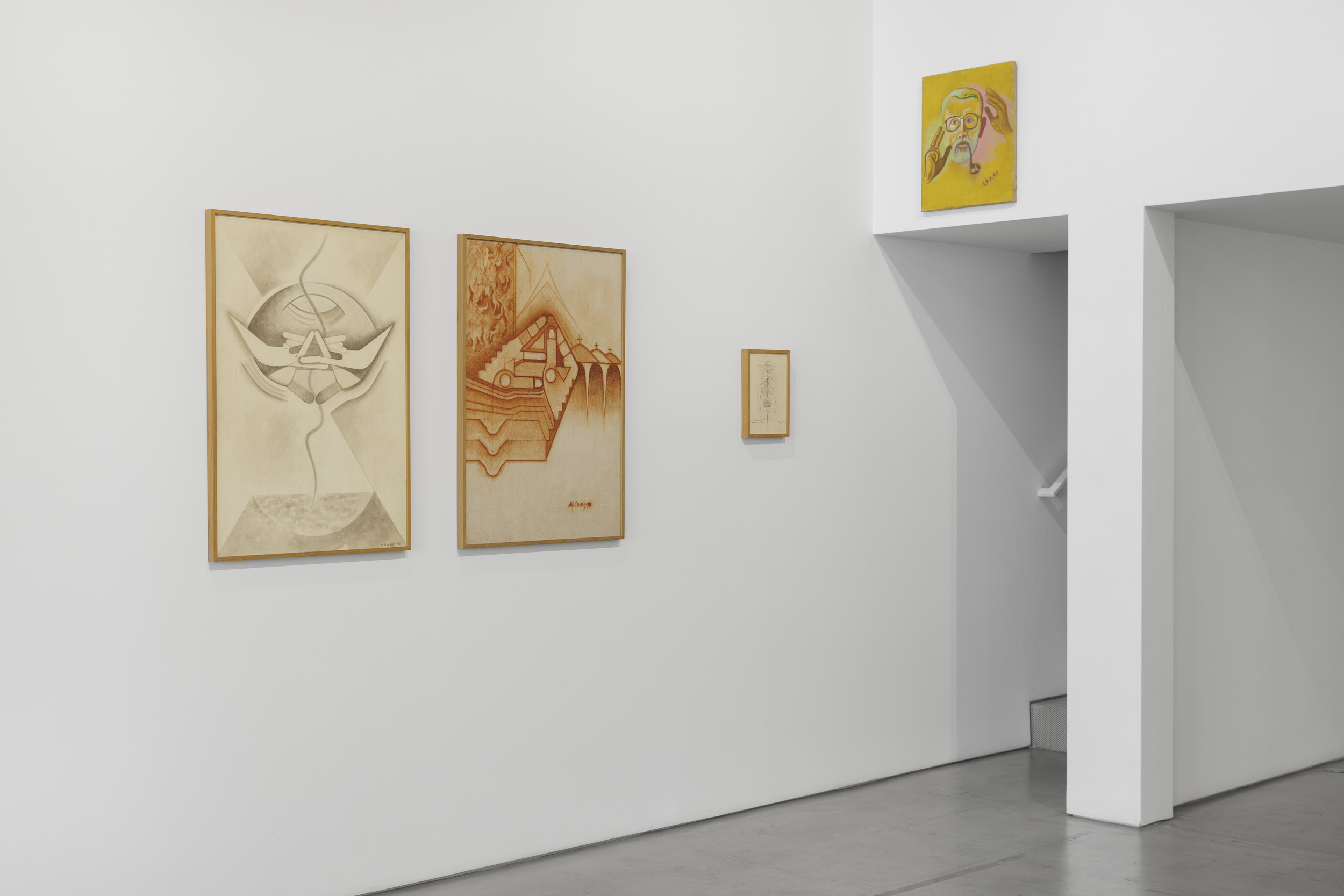

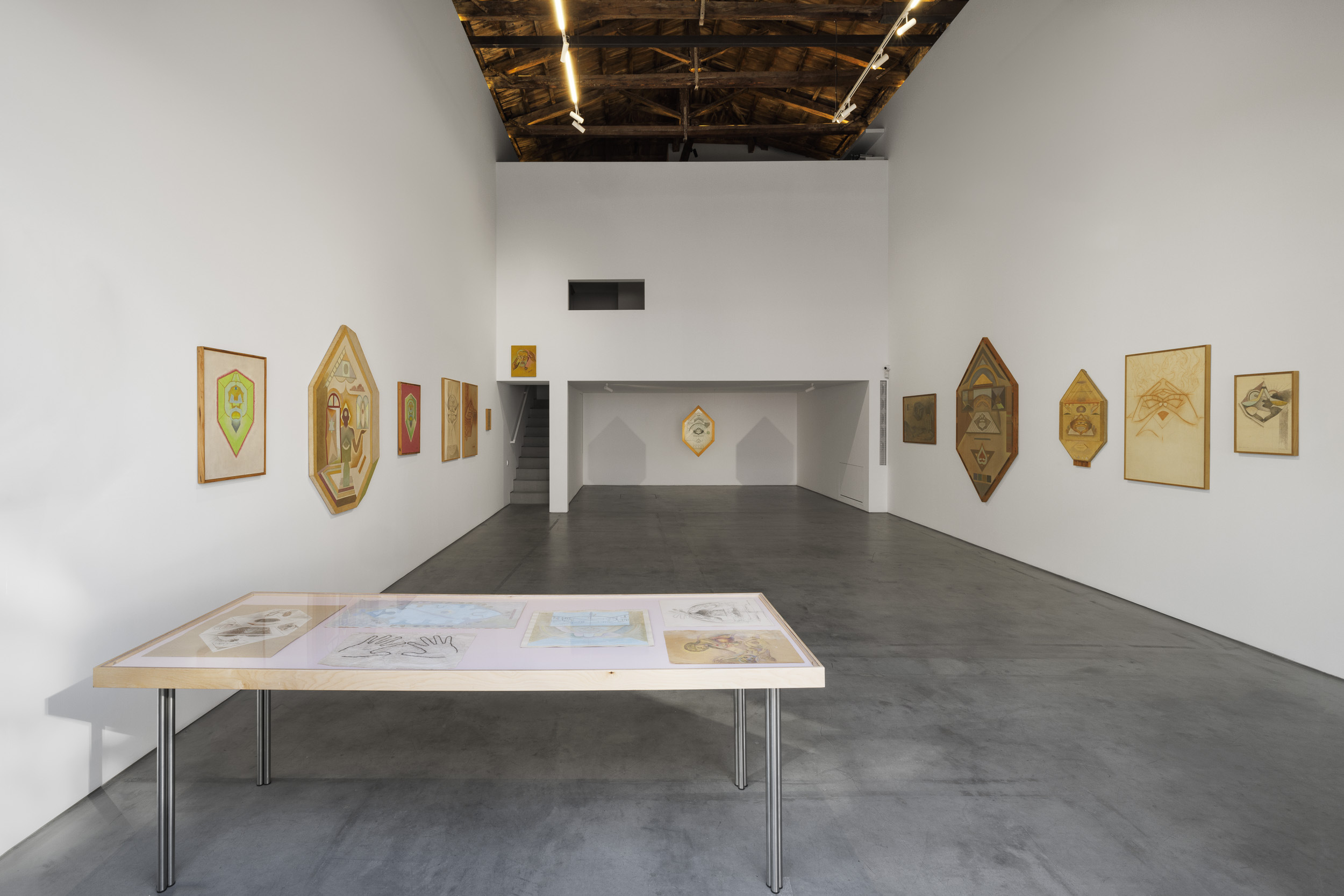
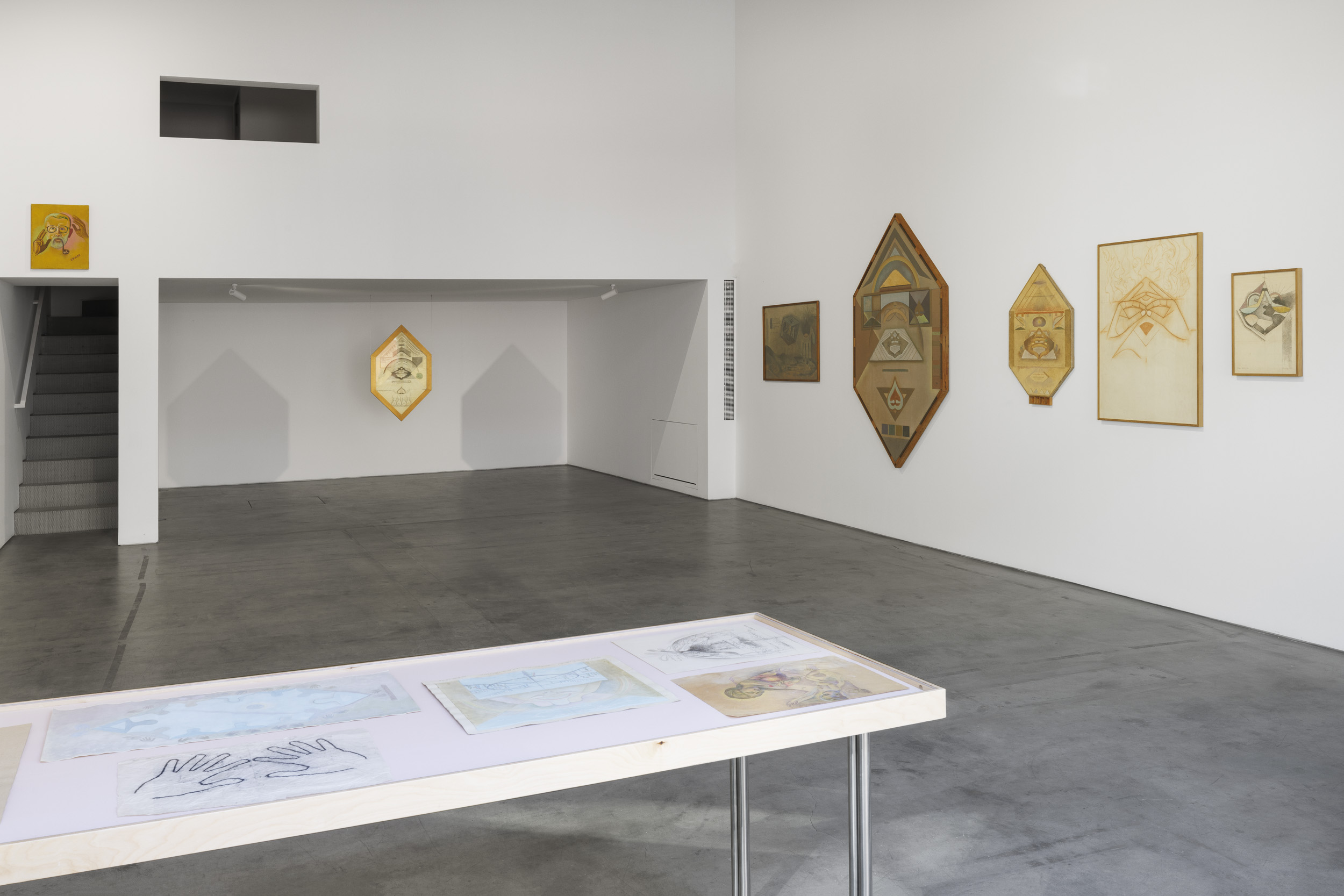






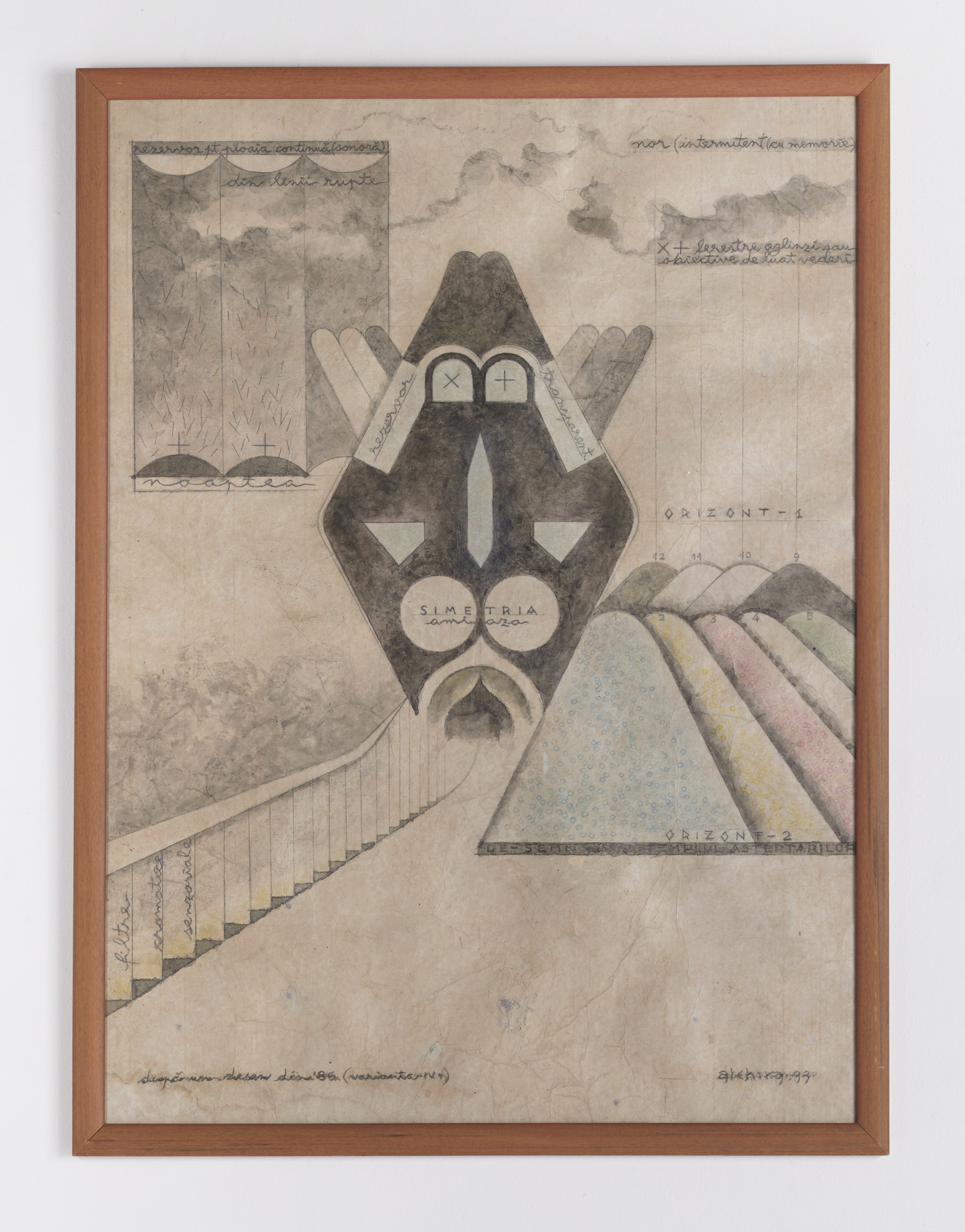
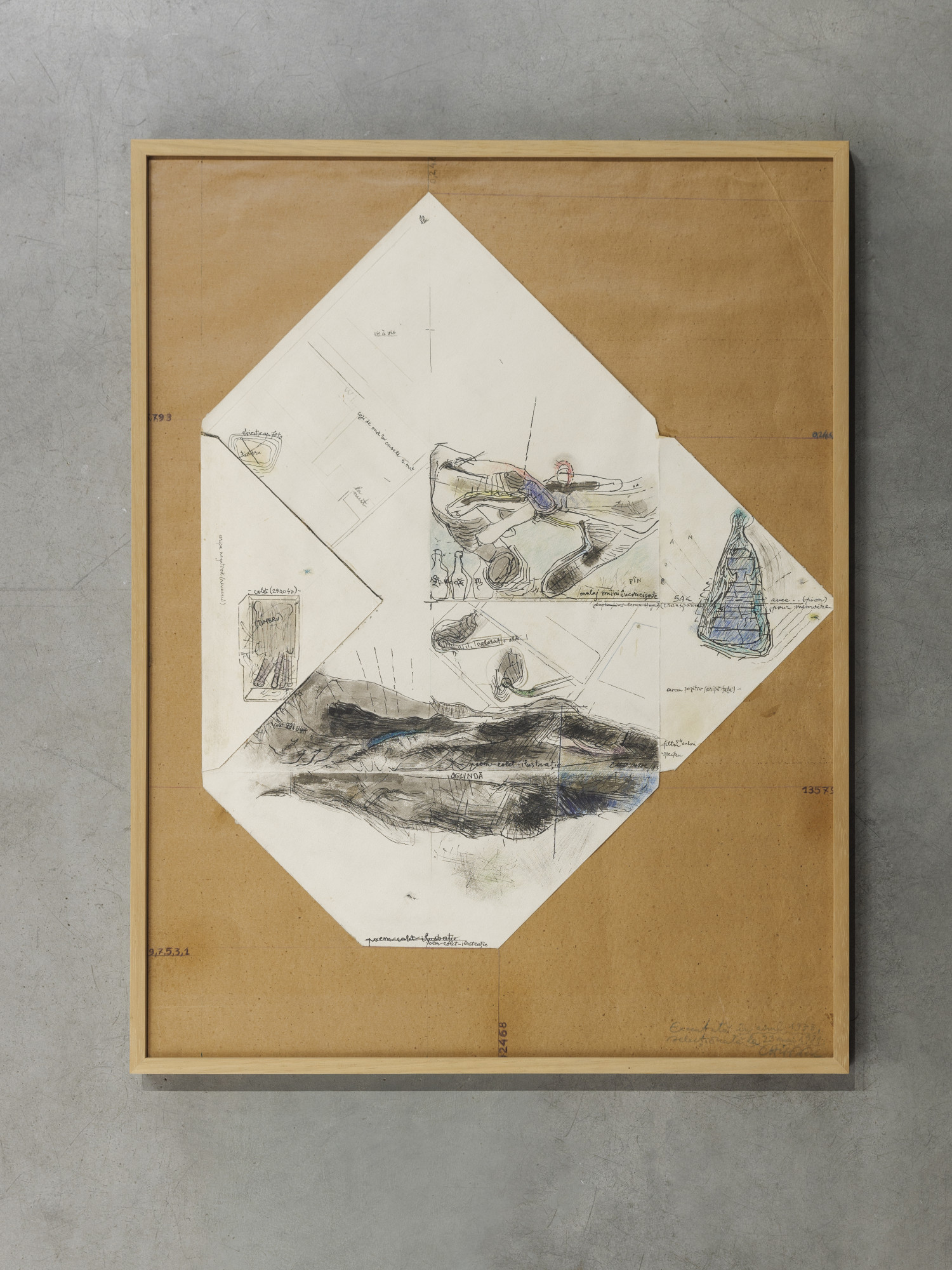
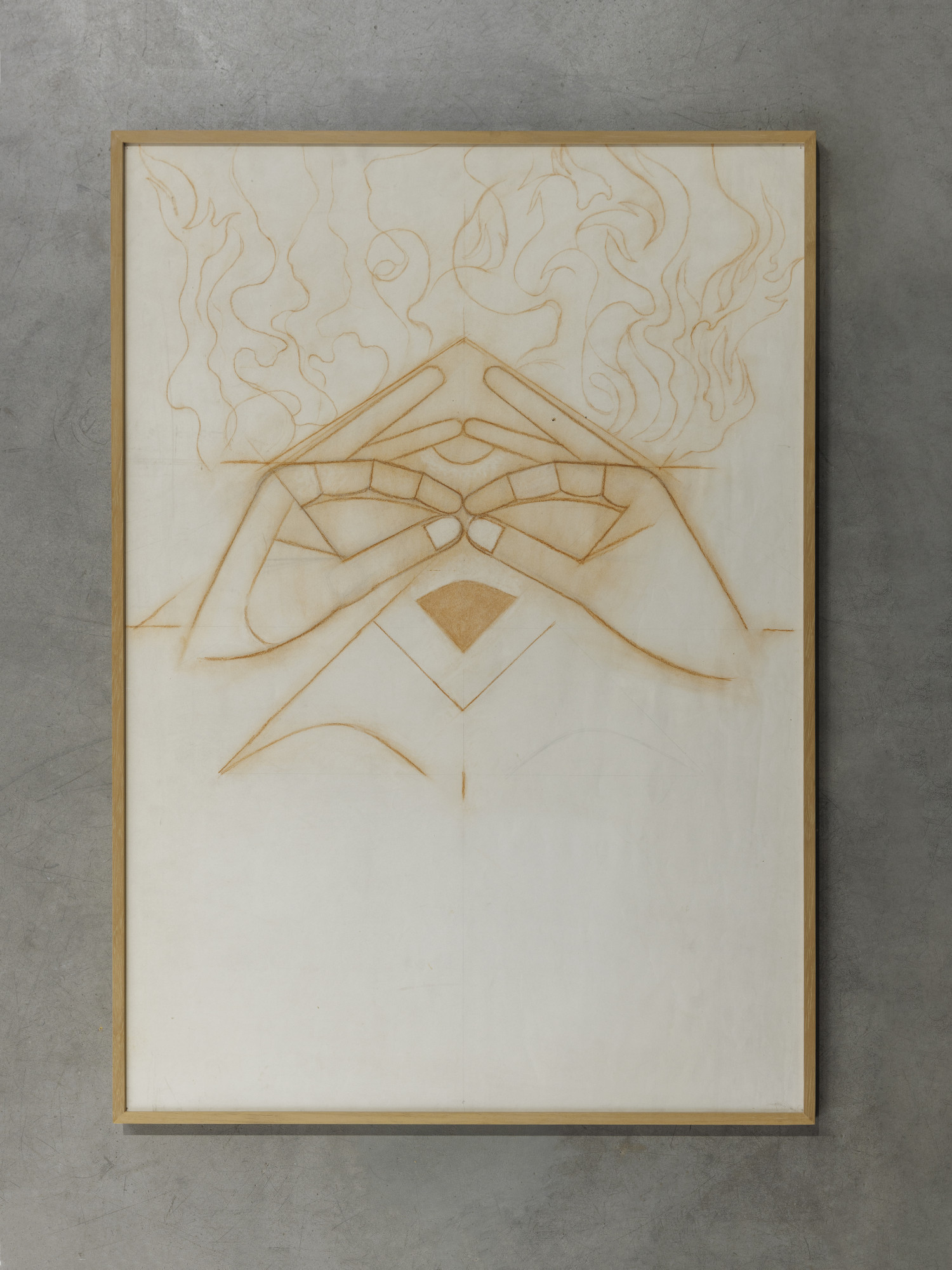
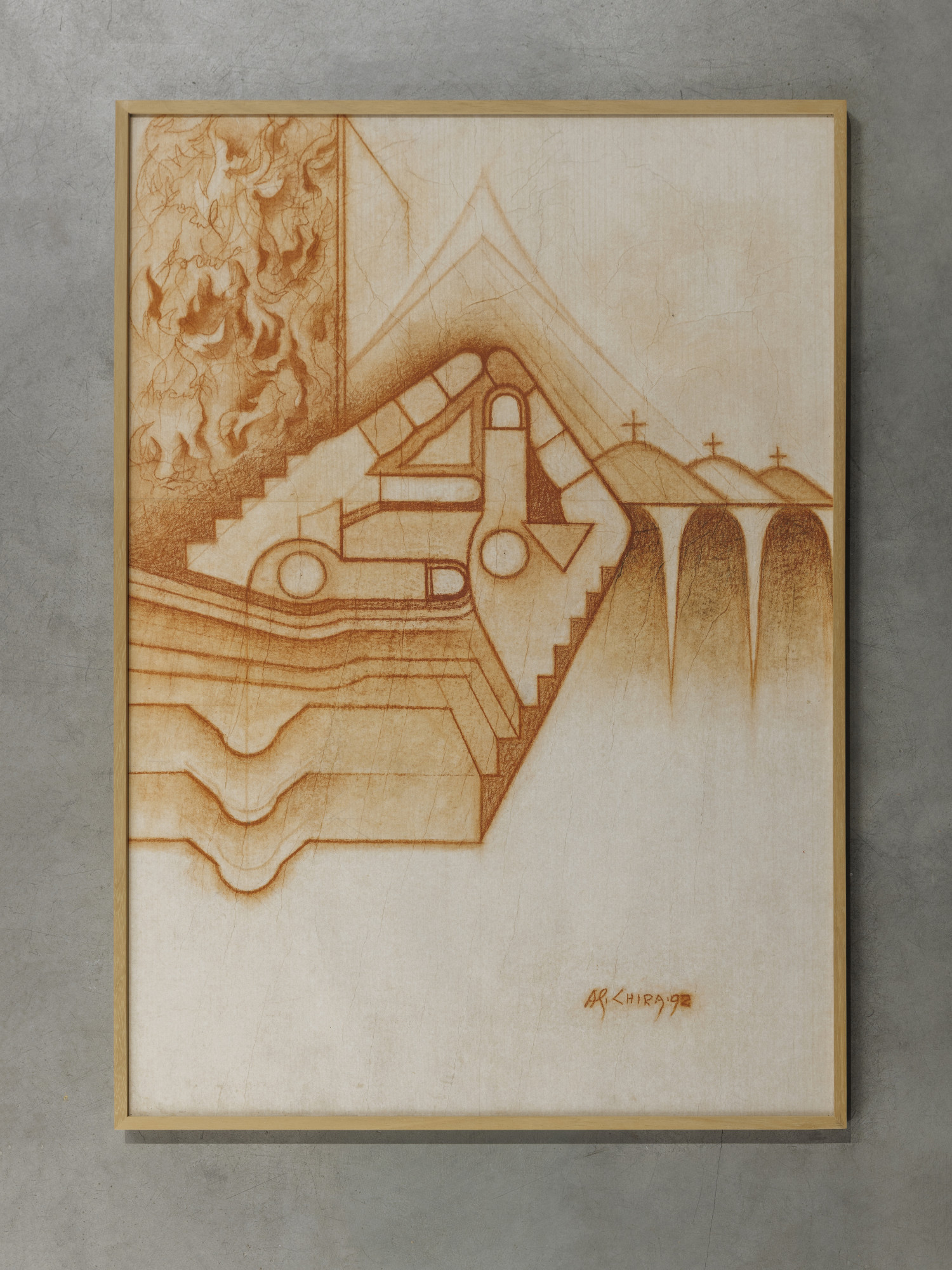




The Temple of Expectations (Study), 1983
Pencil and colored pencil on paper
31.5 x 22.5 x 3 cm
12 3/8 x 8 7/8 x 1 1/8 in
